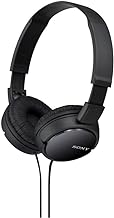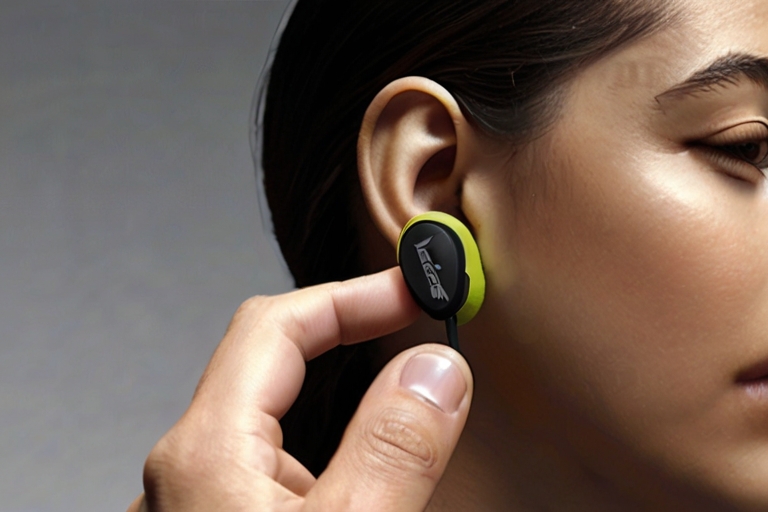Bluetooth Hearing Protection Headset

1. Introduction to Bluetooth Hearing Protection Headsets
Bluetooth hearing protection headsets are essential for anyone working or spending significant time in noisy environments. These headsets combine traditional hearing protection features, such as noise reduction and sound dampening, with the convenience of Bluetooth connectivity for communication and media streaming. The integration of Bluetooth technology allows users to stay connected to their devices without sacrificing the level of hearing protection required in environments like construction sites, factories, or while engaging in noisy outdoor activities.
Bluetooth hearing protection headsets have evolved significantly, providing a balance between safeguarding hearing and enhancing productivity. These headsets feature high noise reduction ratings (NRR) to block harmful levels of noise, while Bluetooth capabilities offer hands-free communication for workers, reducing the need for multiple devices. Whether it’s making phone calls, listening to music, or receiving work-related updates, these headsets provide a seamless and efficient solution for maintaining safety and connectivity.
What is a Bluetooth Hearing Protection Headset?
A Bluetooth hearing protection headset is a specialized device that combines hearing protection and Bluetooth wireless technology. These headsets are designed to block out hazardous noise levels, protecting the user’s ears from long-term damage, while simultaneously allowing them to connect to Bluetooth-enabled devices for communication and media playback. This dual functionality makes them ideal for environments where noise exposure is a concern but staying connected is also important.
Hearing protection is achieved through technologies like noise-canceling ear muffs, earplugs, or integrated ear cups designed to reduce sound levels to safe limits. Bluetooth functionality ensures that users can connect to their smartphones, tablets, or communication devices without the need for wires. These headsets are commonly used in industrial settings, construction sites, and outdoor activities where noise is prevalent.
How Bluetooth Technology Enhances Hearing Protection
Bluetooth technology enhances hearing protection headsets by adding a layer of convenience and connectivity. In a traditional hearing protection device, users may need to remove the headset to take phone calls or listen to instructions, which compromises safety. With Bluetooth integration, users can remain protected while staying in touch with colleagues or listening to audio from their devices.
Many Bluetooth hearing protection headsets also feature audio control functions, allowing users to adjust the volume, skip tracks, or take calls directly from the headset. This minimizes distractions and interruptions, making the headsets practical for various high-noise environments.
2. Key Features of Bluetooth Hearing Protection Headsets
Bluetooth hearing protection headsets offer a unique combination of safety, functionality, and convenience. Understanding the key features of these headsets can help users choose the right product for their specific needs. The most notable features include the noise reduction rating (NRR), wireless connectivity, and overall comfort.
Noise Reduction Rating (NRR)
One of the most critical features of a Bluetooth hearing protection headset is its noise reduction rating (NRR). This rating measures how effectively the headset can reduce noise levels to protect the user’s hearing. Headsets with higher NRRs offer better protection, making them suitable for use in extremely loud environments like construction sites, airports, or industrial manufacturing plants.
A typical NRR for Bluetooth hearing protection headsets ranges between 20 dB and 34 dB. The higher the NRR, the more noise the headset can block. It’s essential to choose a headset with an appropriate NRR for the specific environment. For instance, a construction worker exposed to heavy machinery would require a headset with a higher NRR compared to someone working in a moderately noisy warehouse.
Wireless Connectivity and Multi-Device Pairing
Bluetooth connectivity is the defining feature of these headsets, allowing for wireless communication and media streaming. Users can pair their headsets with multiple devices, such as smartphones, two-way radios, or tablets, enabling seamless transitions between work calls and music streaming without needing to remove the headset.
Some headsets also support advanced Bluetooth features like multipoint pairing, which allows connection to more than one device at a time. This feature is beneficial for professionals who need to stay connected to different devices simultaneously, like a smartphone for calls and a radio for work communication.
Comfort and Fit
Since Bluetooth hearing protection headsets are often worn for extended periods, comfort is a significant consideration. Many models are designed with cushioned ear cups, adjustable headbands, and lightweight materials to minimize fatigue and pressure on the head and ears. Ensuring a proper fit is essential, as this not only affects comfort but also the level of noise protection provided.
Some headsets also include ventilation features or moisture-wicking materials to keep the user comfortable in hot or humid environments. A snug fit ensures that noise is effectively blocked, while comfortable padding prevents irritation or discomfort during long shifts.
3. Benefits of Bluetooth Hearing Protection Headsets
Bluetooth hearing protection headsets offer multiple benefits, particularly for professionals who need to protect their hearing while staying connected. These benefits range from improved safety in noisy environments to enhanced productivity and convenience.
Hearing Safety in Noisy Environments
The primary benefit of Bluetooth hearing protection headsets is their ability to protect hearing in environments with high noise levels. Prolonged exposure to loud sounds can result in permanent hearing damage, but with the right protection, users can reduce the risk significantly. By using Bluetooth hearing protection headsets, workers in noisy settings can perform their duties safely while maintaining communication with their team.
The noise reduction features of these headsets ensure that users remain protected, even when exposed to sudden loud noises like machinery operation or construction work. This protection is especially crucial in industries with strict safety regulations concerning occupational hearing loss.
Hands-Free Communication and Media Streaming
Bluetooth hearing protection headsets allow for hands-free communication, eliminating the need to hold a phone or handle a device manually. This feature is particularly useful in situations where workers are using tools or machinery, as they can stay connected while keeping their hands free for the task at hand. Hands-free communication also reduces distractions and improves workflow efficiency.
In addition to calls, these headsets also support media streaming, allowing users to listen to music, podcasts, or audio instructions while working. This versatility makes Bluetooth hearing protection headsets a practical solution for both communication and entertainment.
Improved Productivity and Convenience
The ability to protect hearing and maintain communication without the need to remove the headset leads to improved productivity. Workers can receive instructions, answer calls, or listen to media without interrupting their workflow. Bluetooth hearing protection headsets also reduce the need for multiple devices, consolidating communication tools into one versatile headset.
This added convenience not only increases productivity but also improves the overall user experience. Workers can focus on their tasks while staying connected and protected, which enhances both efficiency and safety.
4. Applications of Bluetooth Hearing Protection Headsets
Bluetooth hearing protection headsets are used in various industries and activities where noise exposure is a concern. These headsets provide both hearing protection and connectivity, making them ideal for industrial, outdoor, and transportation applications.
Industrial and Construction Work
In industries such as construction, manufacturing, and warehousing, noise levels can be hazardous. Workers are often exposed to loud machinery, heavy equipment, and other noisy processes that can cause hearing damage over time. Bluetooth hearing protection headsets are essential for these environments, providing effective noise reduction while allowing workers to communicate hands-free.
These headsets are particularly valuable for team-based tasks, where coordination and communication are essential for safety and efficiency. Construction workers, for example, can use Bluetooth headsets to receive real-time instructions from supervisors while remaining protected from harmful noise levels.
Outdoor and Recreational Activities
Bluetooth hearing protection headsets are also used for recreational activities, such as shooting, hunting, or motorcycling, where noise exposure can be a concern. These headsets provide ear protection from gunfire, engine noise, or wind while allowing users to communicate or listen to music via Bluetooth.
Outdoor enthusiasts appreciate the convenience of wireless communication without compromising hearing safety. Whether it’s talking to friends while hiking or listening to music during a motorcycle ride, these headsets offer both protection and entertainment.
Aviation and Transportation
In aviation and transportation, where noise levels from engines and machinery can be extreme, Bluetooth hearing protection headsets play a critical role. Pilots, ground crew, and transportation workers use these headsets to protect their hearing while maintaining communication with other team members. The integration of Bluetooth allows for hands-free, real-time communication, which is vital in fast-paced environments like airports or logistics hubs.
Q&A Section
Q: How does Bluetooth hearing protection work?
A: Bluetooth hearing protection works by combining noise reduction features, such as noise-canceling ear muffs, with Bluetooth technology. The headset blocks harmful noise levels while allowing the user to connect to Bluetooth-enabled devices for communication and media streaming.
Q: Can I use Bluetooth hearing protection headsets for phone calls?
A: Yes, Bluetooth hearing protection headsets allow you to make and receive phone calls wirelessly while keeping your ears protected from loud noises. This is particularly useful in noisy work environments where communication is essential.
Q: How do I choose the right Bluetooth hearing protection headset?
A: When choosing a Bluetooth hearing protection headset, consider the noise reduction rating (NRR), comfort, battery life, and Bluetooth range. Additionally, make sure the headset fits your work or recreational needs, whether it’s for industrial work, outdoor activities, or aviation.
Conclusion
Bluetooth hearing protection headsets are an essential tool for anyone exposed to noisy environments. These headsets combine advanced noise reduction technology with the convenience of Bluetooth connectivity, offering both hearing protection and hands-free communication. Whether used in industrial, recreational, or transportation settings, Bluetooth hearing protection headsets provide a safe, productive, and convenient solution for protecting hearing while staying connected.






One Comment